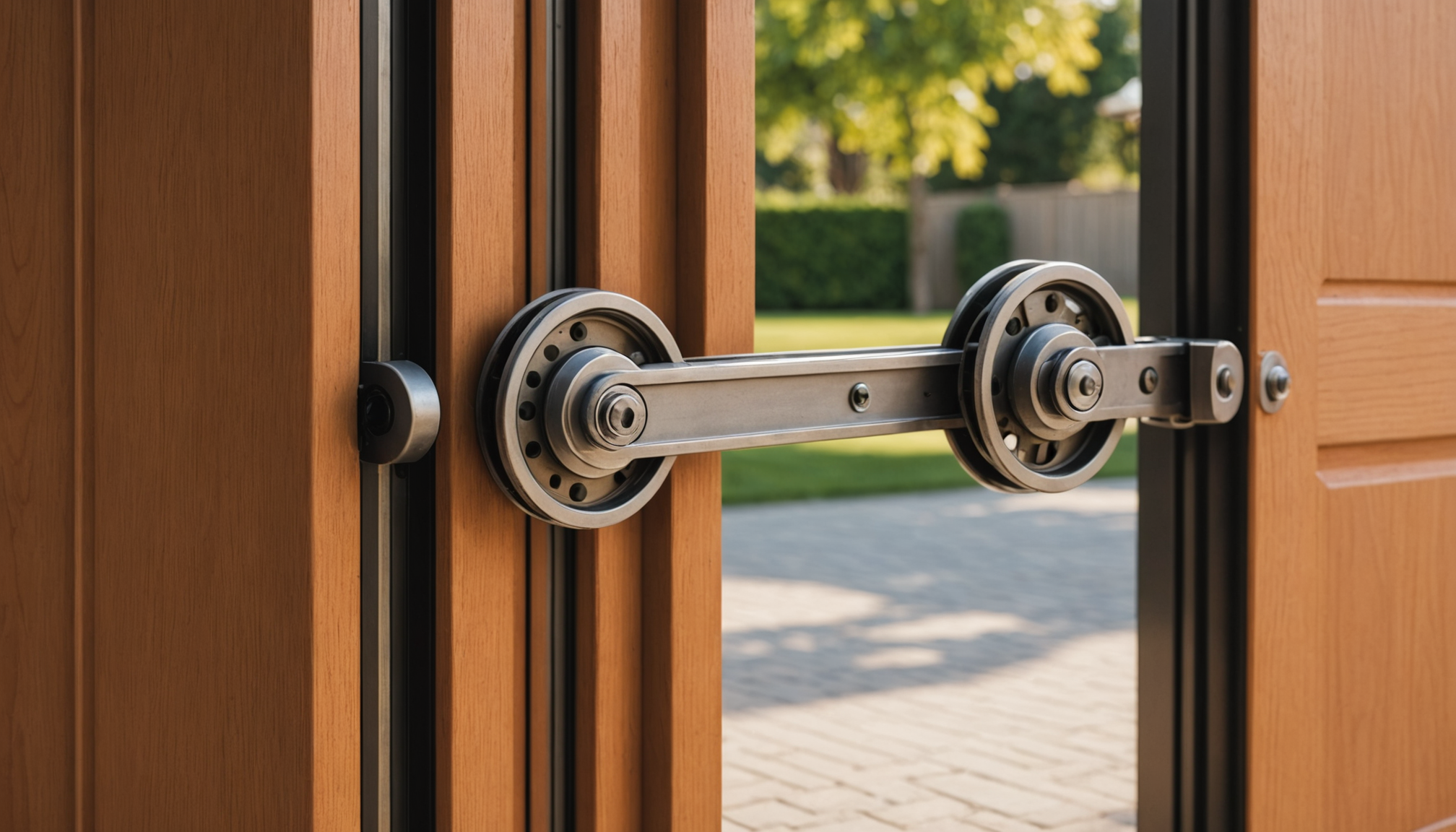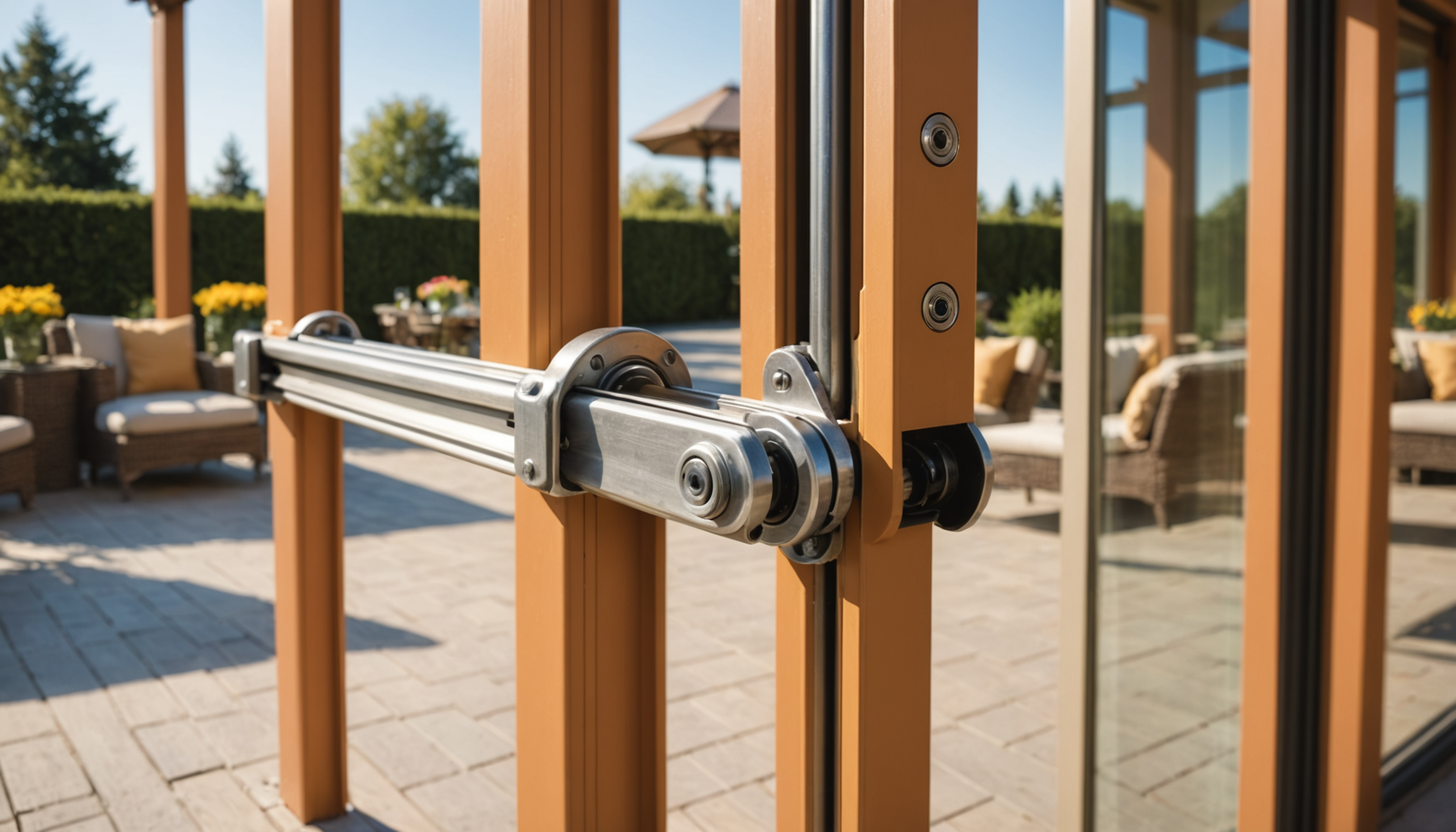Patio and sliding doors are a staple in many homes, offering easy access to outdoor spaces while allowing natural light to pour into living areas. These doors operate on a deceptively simple mechanism, relying heavily on rollers that glide along tracks. The functionality of these roller mechanisms impacts the overall performance and durability of your doors. For homeowners in Missouri, understanding how these components work is essential for effective DIY maintenance and ensuring the longevity of your doors.
At the heart of patio and sliding door mechanics is the roller system. Typically, these doors rest on rollers that run along tracks installed in the door frame. Each sliding door usually has a set of two or more rollers, which are strategically placed to distribute weight evenly and facilitate smooth movement. The rollers are often height adjustable, allowing for proper alignment of the door within its frame. This adjustment can be pivotal especially when there are changes in temperature and humidity, factors that are quite common in Missouri’s varied climate and can cause materials to expand or contract.
Successful DIY maintenance requires a good understanding of how these door systems work. Specifically, knowing how the weight of the door is supported and how the adjustment mechanisms function is critical. For instance, an imbalanced door can not only damage the tracks but also cause strain on the rollers, leading to premature wear. In addition, recognizing that the efficient movement of your sliding doors depends on clean, debris-free tracks underscores the importance of regular cleaning as part of routine maintenance. As experts from the Home Innovation Research Labs suggest, keeping your tracks clean can reduce the strain on rollers and other hardware, minimizing the need for frequent repairs.
The mechanics behind patio and sliding doors are a blend of simple physics and precision engineering. For Missouri homeowners interested in DIY projects, taking the time to understand these basic principles can help diagnose issues early and apply fixes that save both time and money. Beyond just the immediate benefits, this knowledge equips homeowners to handle seasonal adjustments efficiently, vital in a state where fluctuating weather conditions are a common occurrence.
Identifying common roller issues
In Missouri, homeowners often encounter a range of common issues with patio and sliding door rollers. One frequent problem is doors becoming difficult to slide. This often occurs due to accumulated dirt, debris, or rust in the tracks or on the rollers themselves. Regular exposure to Missouri’s weather, marked by humidity and seasonal changes, can exacerbate these conditions, leading to increased resistance and decreased smoothness in operation.
Another common issue is misalignment. Over time, the constant use of the doors coupled with environmental factors can cause the rollers to shift or become unbalanced. This misalignment might result in gaps between the door and the frame, leading to drafts, increased noise, or even security vulnerabilities. Homeowners can often hear a grinding noise or notice that the door no longer locks securely, indicating misaligned rollers require adjustment.
Additionally, worn or damaged rollers are a typical problem, particularly in older doors. When rollers wear out, they may flatten or break, causing the door to stick or jump as it moves along the track. In these cases, replacement is necessary to restore the door’s functionality.
Missouri’s variable climate can lead to material expansion and contraction. This makes it essential for homeowners to routinely check for any signs of wear or distress in the roller system to avoid these common issues. Identifying such problems early on can prevent more substantial harm and costly repairs.
- Regularly clean door tracks to prevent accumulation of dirt, which can lead to difficult sliding.
- Check for proper alignment if you notice drafts or difficulty in locking the door.
- Inspect rollers for wear and tear, especially if the door seems to jump or stick.
- Consider seasonal variations and preemptively adjust the rollers to accommodate shifts in humidity and temperature.
- Replacing damaged rollers promptly can prevent further damage to the door system.
Necessary tools and materials for a DIY tune-up
Embarking on a DIY tune-up for your patio or sliding door rollers requires specific tools and materials to ensure a successful maintenance process. Preparing this toolkit in advance can significantly streamline the task and mitigate potential complications.
A crucial item in your toolkit is a Phillips and flathead screwdriver. These are essential for removing the door from its frame and accessing the roller system. Depending on your door model, you might also need an Allen wrench to adjust roller heights or remove certain components. Keep pliers handy to grip and manipulate small parts or fasten nuts and bolts securely.
To effectively clean debris from the track and rollers, a stiff-bristle brush or old toothbrush will prove invaluable. It’s ideal for dislodging grime without scratching the metal surface. Pair this with a vacuum cleaner equipped with a hose attachment to remove loosened dirt. For a more thorough clean, include a mild soap mixed with warm water, or a non-corrosive cleaner, and a soft cloth to wipe down the components, especially if there’s noticeable buildup.
Opt for a silicone-based lubricant for re-lubricating the rollers and tracks post-cleaning. Unlike petroleum-based alternatives, silicone lubricants do not attract dust or dirt, making them particularly well-suited for maintaining smooth movement over time.
If your inspection identifies any damaged rollers, having replacement parts ready is paramount to avoid disrupting your DIY session. Accumulate these in accordance with the specifications from your door manufacturer to ensure compatibility.
An essential but often overlooked element is a carpenter’s level. Missouri’s shifting climates might cause patio or sliding doors to become unbalanced, necessitating meticulous review and adjustment using this tool. It allows you to confirm and correct evenness after replacing or servicing rollers, ensuring optimal functionality.
Finally, although not always required, it’s prudent to have replacement screws and a rubber mallet on hand. The latter assists in gently coaxing components into place without causing damage, especially if rust or dirt has made parts difficult to separate.
Arming yourself with these tools and materials will not only facilitate smoother tune-ups but also empower you to effectively address common issues that often beset Missouri homeowners, ensuring that your patio and sliding doors remain in top operational condition.
Step-by-step guide to roller maintenance
Starting your DIY roller maintenance in Missouri involves a methodical approach to ensure your patio and sliding doors operate smoothly. Begin by safely removing the door from its frame. You’ll want to tilt or lift the door depending on its design—an action best performed with a partner, given the door’s weight and size. Once removed, lay the door on a padded surface to prevent scratches or damage.
Next, focus on inspecting the rollers closely. This is where you’ll determine whether the rollers merely need cleaning and lubrication or full replacement. Use a Phillips or flathead screwdriver to remove the rollers from the door bottom. Clean off any built-up dirt or grime using a stiff-bristle brush, and if necessary, entail a mild soap solution to tackle stubborn residues. Follow up with a wipe down using a soft cloth.
In cases where rollers are excessively worn, cracked, or broken, proceed with replacing them. Refer to your door’s manufacturer guidelines to source precisely matching parts for a successful swap. Once your rollers are clean or new, apply a silicone-based lubricant generously. This will guarantee that the rollers glide effortlessly along the tracks, essential for day-to-day usability in the fluctuating Missouri climate.
After attending to the rollers, shift your attention to the door tracks. Vacuum the tracks to capture loose debris, then scrub them gently using a brush to dislodge any hidden dirt. Clean tracks play a pivotal role in preventing roller damage and ensuring smooth door movement.
While reinstalling the door, use a carpenter’s level to confirm even placement. Adjust the height of the rollers if needed to ensure the door hangs correctly and doesn’t wobble or catch on the frame. During this phase, it’s critical to guarantee that the door can open and close seamlessly.
Transforming your DIY roller maintenance into a regular routine can greatly enhance the lifespan of your doors. Not only does this practice save on potential costly repairs in the future, but it also contributes to the overall comfort and energy efficiency of your home in Missouri.
With this comprehensive approach, you’re empowering yourself to maintain these vital household components like a pro. Remember, each small step contributes to significant longevity and performance. Motivated by the outcome of a job well done, your home will retain its seamless connection to the outdoors, no matter the Missouri weather.
Tips for prolonging roller lifespan in Missouri
Enhancing the lifespan of patio and sliding door rollers in Missouri requires some proactive measures to address the unique environmental challenges faced by homes in the region. The state’s climate, characterized by humidity and significant temperature fluctuations, can impact the functionality and durability of door components. To mitigate these effects, regular maintenance is crucial.
Firstly, it is essential to keep the door tracks clean. Accumulated dirt and debris can significantly impede the motion of the doors. Since Missouri experiences various seasons that bring wind, rain, and occasional storms, it’s advisable to check and clean the tracks every few months or after severe weather conditions. A simple mixture of mild detergent and warm water applied with a brush can effectively remove dirt without damaging the tracks.
Next, consider the material and quality of your rollers. Opt for high-quality, corrosion-resistant rollers designed to withstand humidity and temperature changes. When it’s time to replace old ones, invest in products that promise durability in diverse climates. Stainless steel or nylon rollers are often recommended as they offer good resistance to rust and wear.
Make it a habit to lubricate the rollers and tracks periodically. Silicon-based lubricants are highly recommended because they don’t attract dust and help maintain smooth operation over time. Avoid oil-based products as they might collect debris, negating the benefits of cleaning your tracks.
Frequent inspections can prevent minor issues from becoming significant problems. Keeping an eye out for signs of wear and addressing them promptly ensures that your doors remain functional and minimize the risk of more extensive repairs later. During the inspection, check for proper alignment and adjust the rollers as necessary because an unbalanced door can strain the roller system.
Lastly, adopt seasonal adjustments to accommodate the frequent climate changes in Missouri. As temperatures rise and fall, especially during transitional seasons like spring and fall, the materials in your door system may expand or contract. Adjusting the roller height can compensate for these changes, maintaining efficient door operation and preventing potential damage.
- How often should I clean and maintain my sliding door rollers?
- It’s advisable to clean and inspect your sliding door rollers every three to four months, or more frequently if you’re experiencing issues with door movement or after significant weather events in Missouri.
- What type of lubricant should I use for my door rollers?
- Use a silicone-based lubricant for your door rollers. Unlike oil-based lubricants, silicone doesn’t attract dust and debris, ensuring smooth and long-lasting performance.
- How do I know if my door rollers need replacing?
- If your sliding doors are hard to move, make grinding noises, or jump along the track, it’s likely time to check and potentially replace the rollers. Visible signs like cracked or flat rollers also indicate the need for replacement.
- Can I replace rollers myself, or should I hire a professional?
- You can certainly replace rollers yourself with the right tools and a bit of DIY know-how. However, if you’re uncertain about the process or have complex door systems, seeking professional help is recommended.
- Why are my sliding doors getting stuck, even after cleaning?
- Sticking doors after cleaning could be due to misaligned rollers or track damage. Check for signs of wear or misalignment, and adjust or replace rollers as needed. If the problem persists, inspect the tracks for bends or damage.

